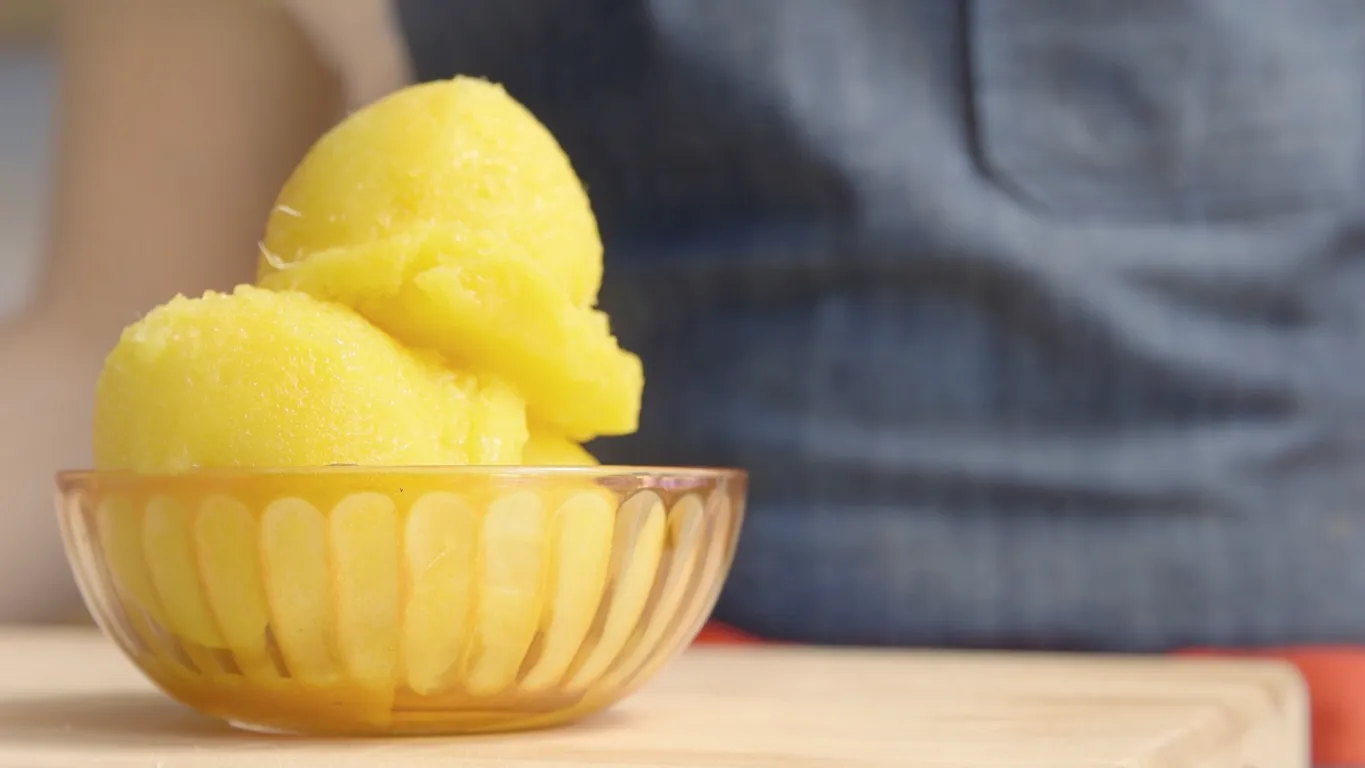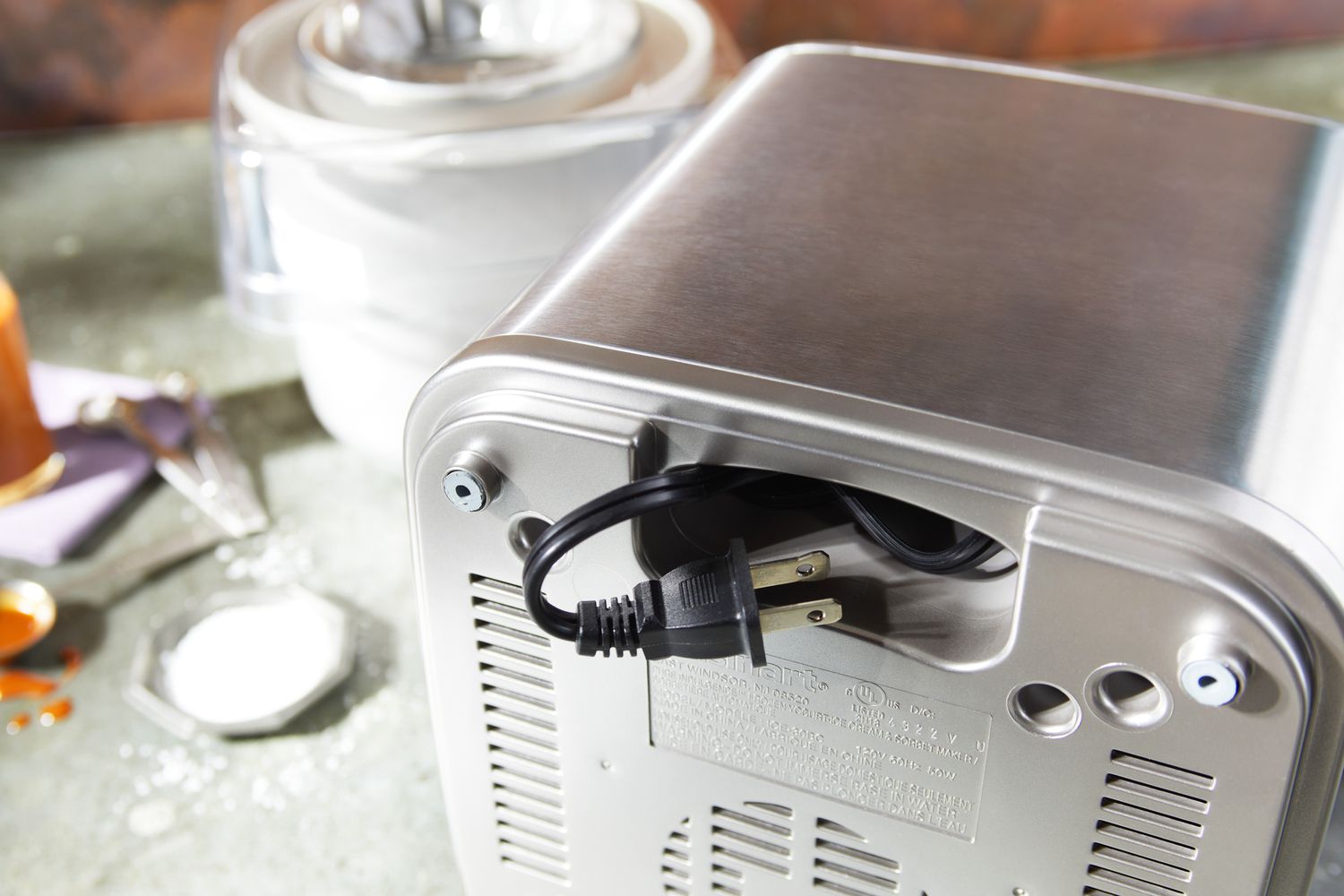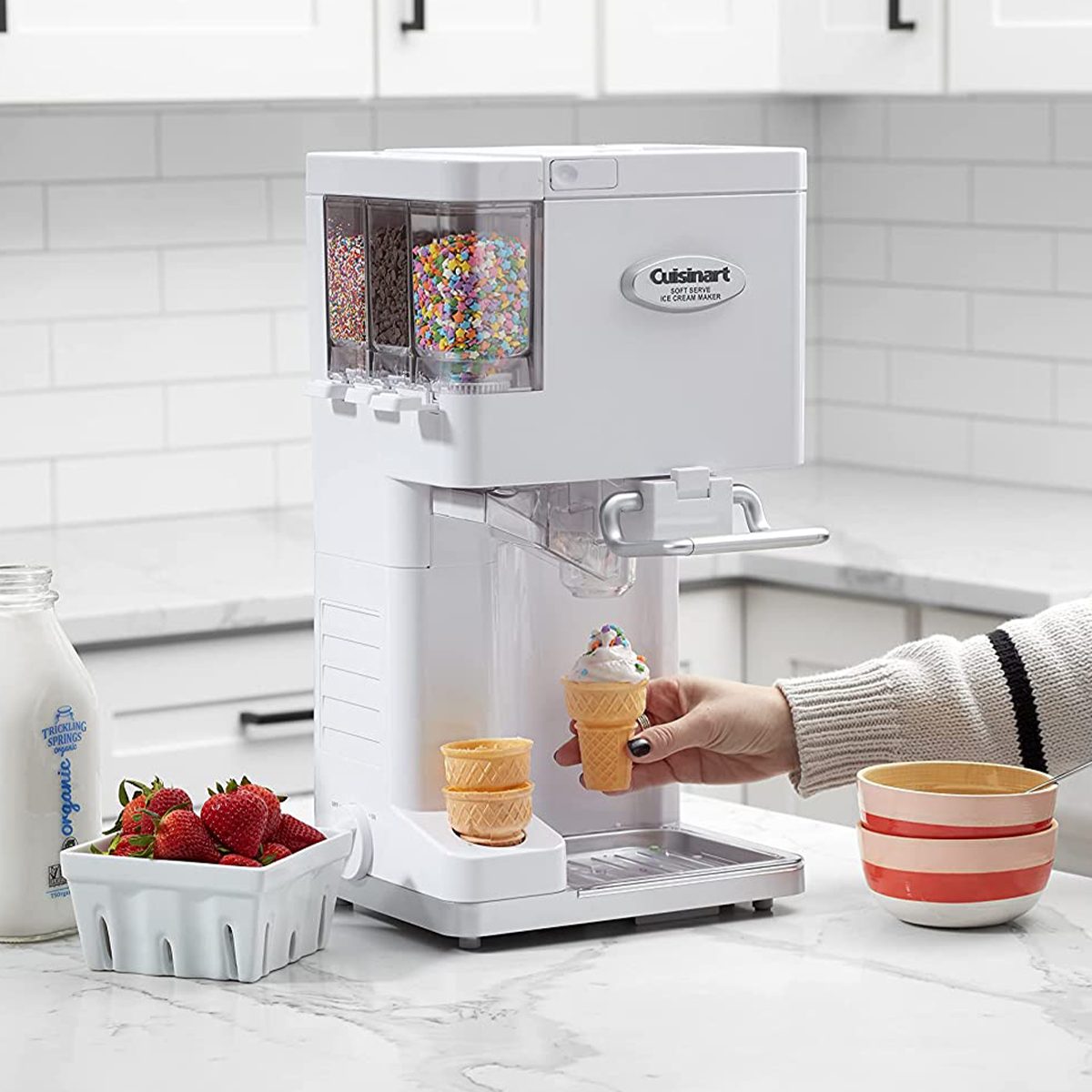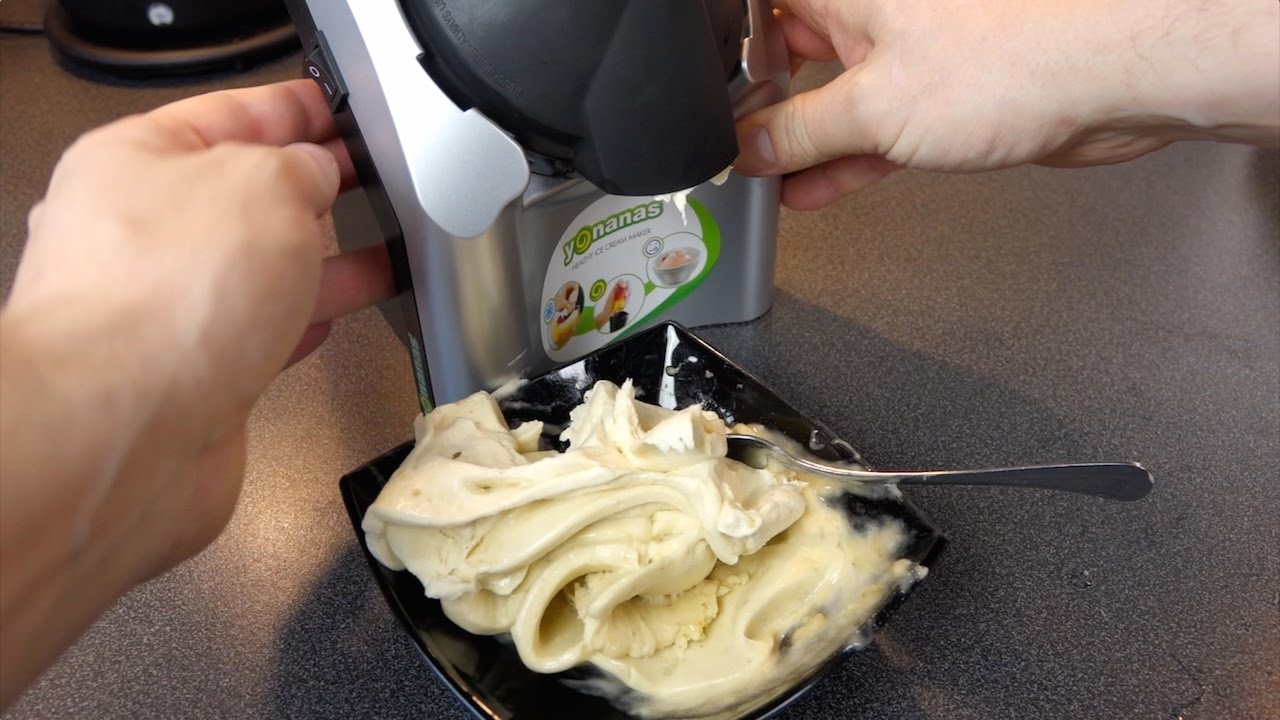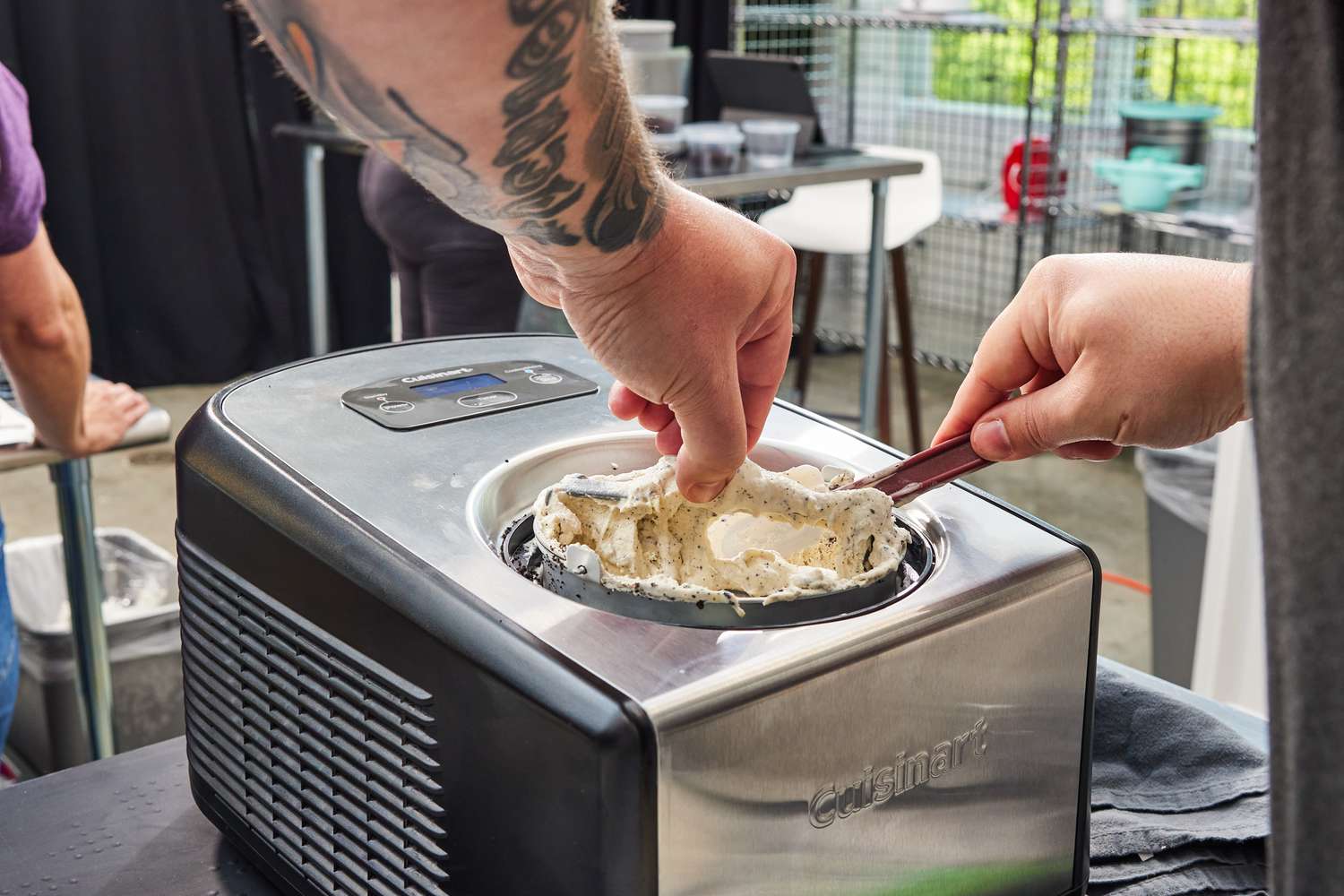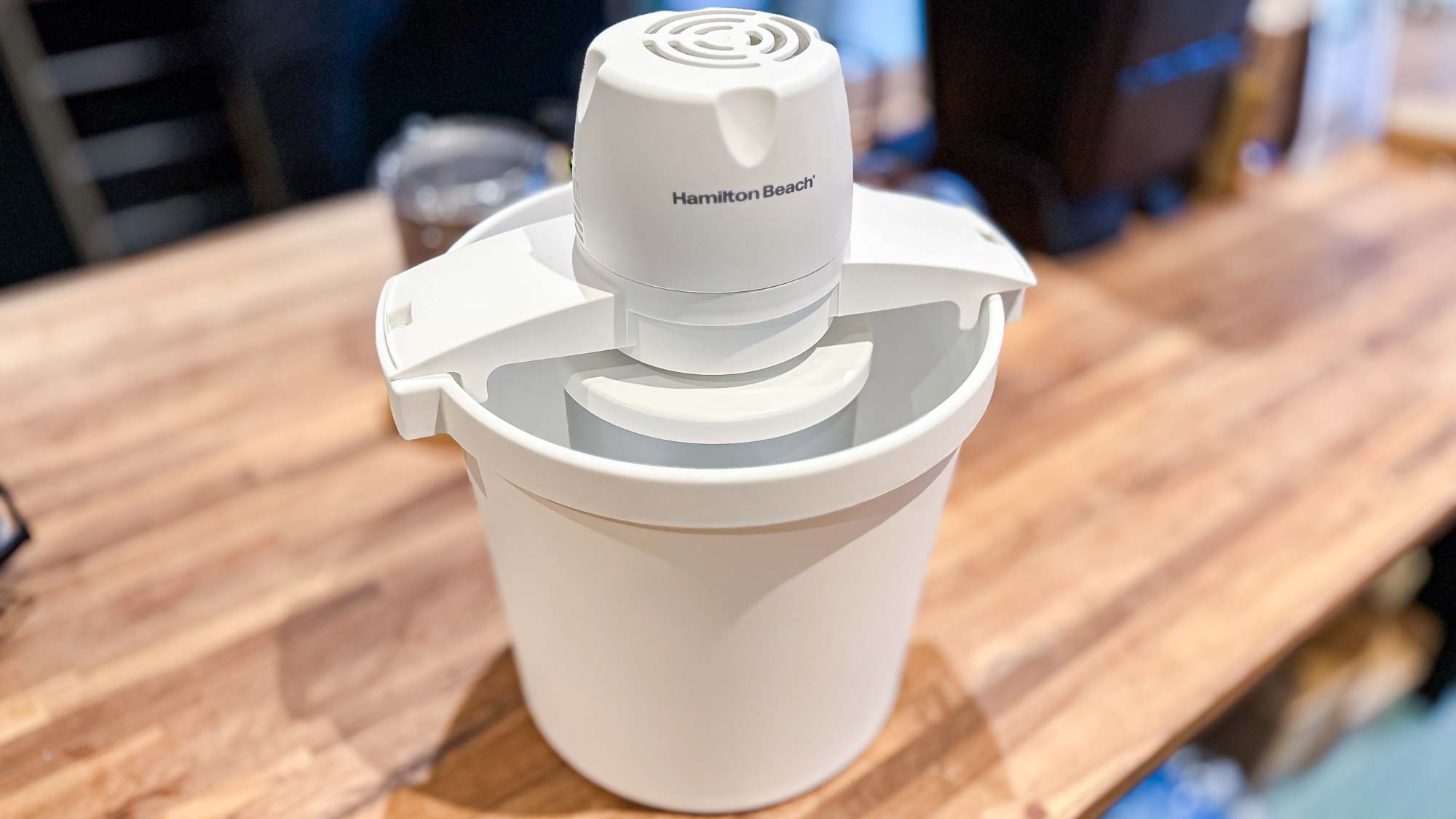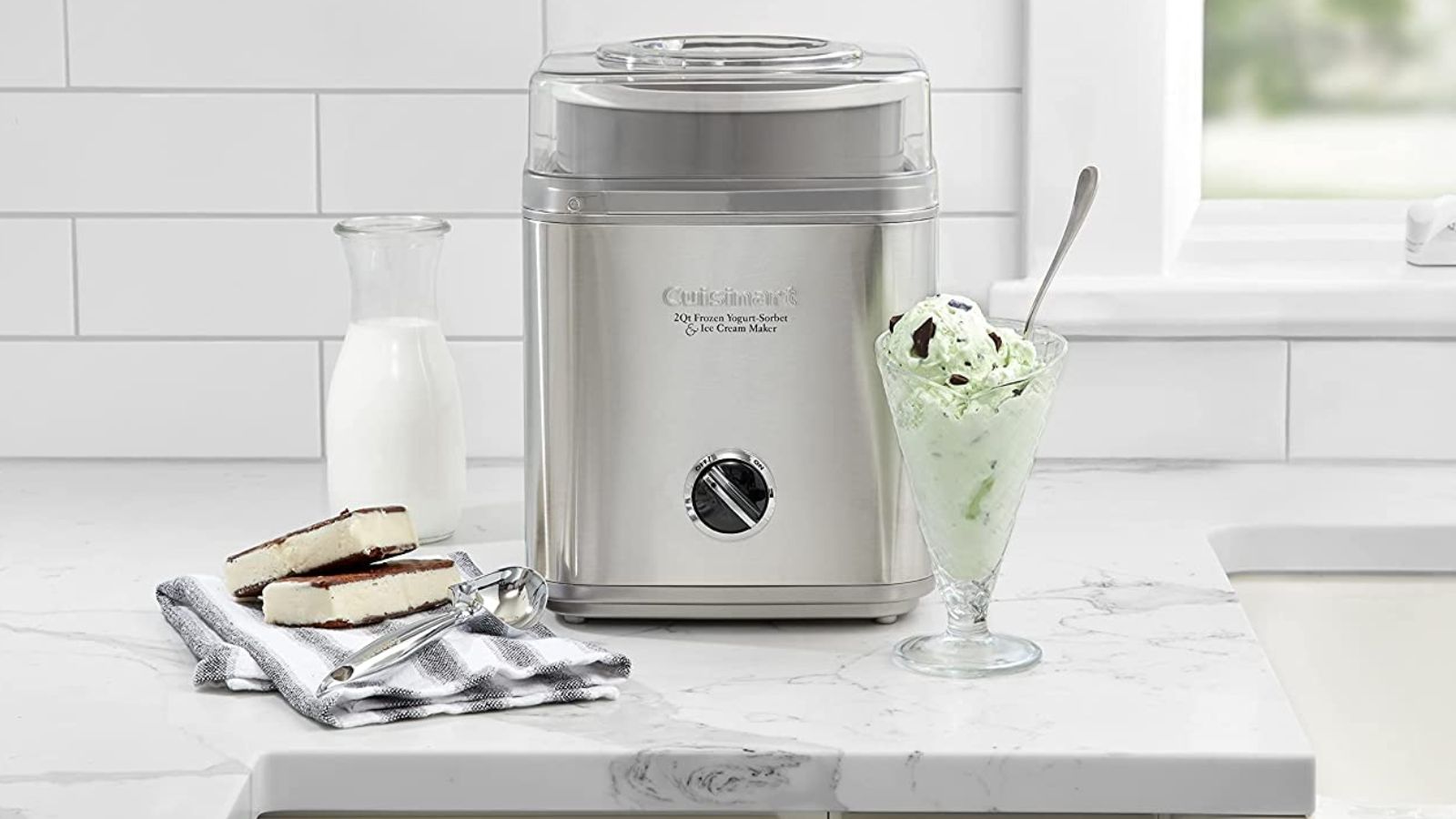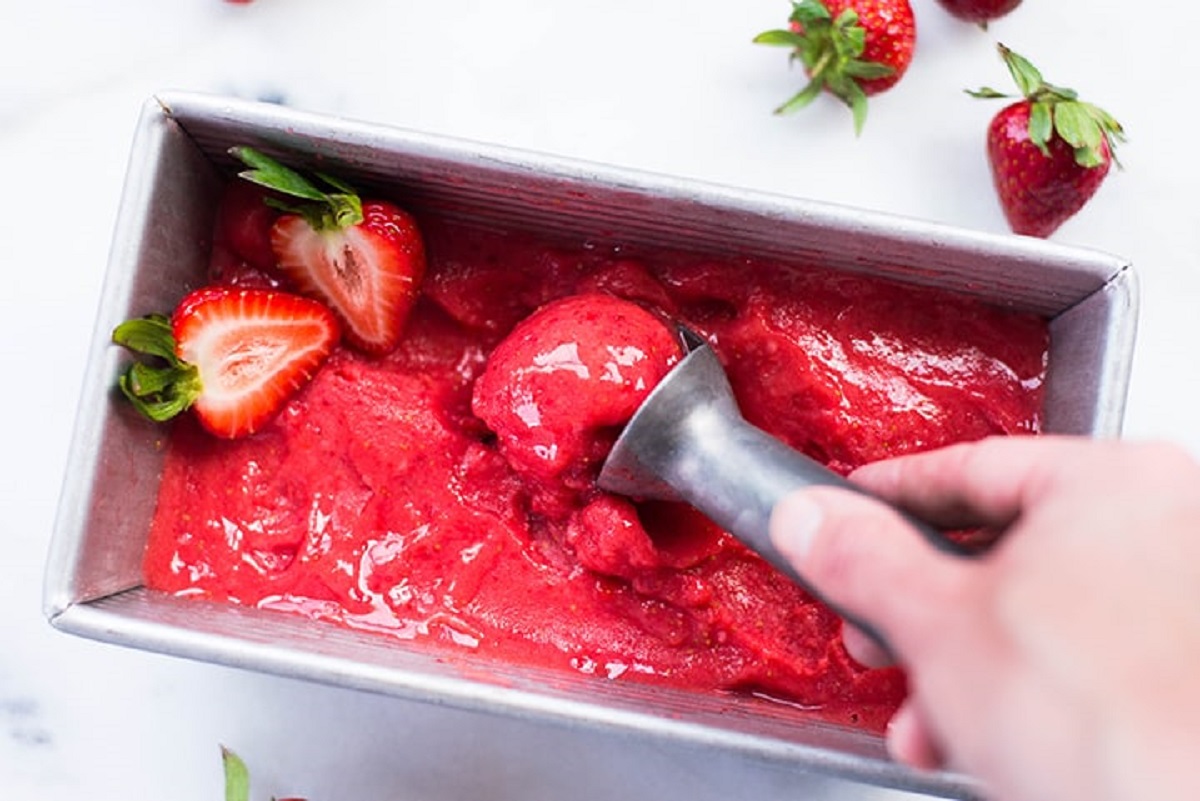Introduction
Welcome to the sweet and refreshing world of homemade sugar-free mango sorbet! This delightful frozen treat is the perfect way to beat the summer heat without the guilt of added sugars. Whether you’re following a sugar-free diet, have dietary restrictions, or simply want to indulge in a healthier dessert option, this recipe is sure to satisfy your craving for something sweet.
Mango sorbet is a classic frozen dessert that captures the tropical flavors and vibrant colors of ripe mangoes. The best part is that you don’t need an expensive ice cream maker to make this delicious treat at home. With just a few simple ingredients and a blender, you can whip up a batch of creamy and tangy mango sorbet that will rival any store-bought version.
In this article, we will guide you through the step-by-step process of making sugar-free mango sorbet without an ice cream maker. From choosing the perfect mangoes to serving and storing the sorbet, we’ve got you covered. So, put on your apron and let’s dive into the wonderful world of homemade sorbet!
Choosing the Perfect Mangoes
When it comes to making mango sorbet, selecting the right mangoes is crucial for achieving that perfect balance of sweetness and flavor. Here are a few tips to help you choose the perfect mangoes for your sorbet:
1. Ripe and Fragrant: Look for mangoes that are fully ripe and emit a sweet, tropical aroma. The fragrance is a good indicator of the mango’s ripeness and will enhance the flavor of your sorbet.
2. Variety Matters: There are various types of mangoes available, such as Alphonso, Ataulfo, Kent, and Tommy Atkins, each with its unique taste and texture. Experiment with different varieties to find your preferred flavor profile for the sorbet.
3. Softness and Texture: Gently squeeze the mangoes to check for ripeness. They should yield slightly to pressure but not be mushy. Avoid mangoes that are overly soft or have any visible bruises.
4. Color Check: The color of a mango can vary depending on the variety. While some mangoes turn vibrant shades of orange, others may have a greenish-yellow hue even when ripe. Instead of relying solely on color, use the other indicators mentioned above to determine ripeness.
5. Seasonal Availability: Mangoes are seasonal fruits, and their availability can vary depending on your location. Plan your sorbet-making adventure when mangoes are in prime season for the best flavor and quality.
Remember, the quality of your mangoes will greatly influence the final taste of your sorbet. So, take your time to choose mangoes that are ripe, fragrant, and suited to your preferences. With the perfect mangoes in hand, you’re one step closer to indulging in a delectable sugar-free mango sorbet.
Preparing the Mangoes
Now that you have chosen the perfect mangoes for your sugar-free mango sorbet, it’s time to prepare them for blending. Follow these simple steps to ensure your mangoes are perfectly prepped:
1. Wash and Peel: Start by washing the mangoes under cool water to remove any dirt or residue. Using a sharp knife, carefully peel off the skin from the mangoes. Mangoes can be slippery, so exercise caution while handling them.
2. Remove the Pit: Mangoes have a large, flat pit in the center. To remove it, hold the mango upright on a cutting board and slice along the sides of the pit. You should end up with two mango cheeks, free from the pit.
3. Dice or Sliced: Depending on your preference, you can either dice the mango flesh or slice it into smaller pieces. Diced mangoes will blend more easily, while sliced mangoes can add a chunky texture to your sorbet.
4. Optional: For a smoother sorbet texture, you can further process the diced or sliced mangoes in a food processor or blender. This step is useful if you prefer a sorbet with no fruit chunks.
Remember to work carefully and efficiently while prepping the mangoes to retain their freshness and flavor. With your mangoes prepared and ready to go, you are now just a few steps away from enjoying a delicious bowl of sugar-free mango sorbet. So, let’s move on to the next stage of the process: creating the sugar-free syrup!
Creating the Sugar-Free Syrup
In order to sweeten your sugar-free mango sorbet, you’ll need to create a flavorful and sweet syrup without using traditional granulated sugar. Here’s how you can make a delicious sugar-free syrup:
1. Natural Sweeteners: Instead of using refined sugar, opt for natural sweeteners such as stevia, erythritol, or monk fruit sweetener. These alternatives are low in calories and don’t cause rapid spikes in blood sugar levels.
2. Liquid Base: Choose a liquid base for your syrup, such as water or a low-sugar fruit juice. This will help to dissolve the sweetener and create a syrupy consistency.
3. Heat and Dissolve: In a small saucepan, combine the natural sweetener and the liquid base over medium heat. Stir the mixture continuously until the sweetener is completely dissolved. Make sure the mixture doesn’t come to a boil.
4. Flavors and Enhancements: To enhance the flavor of your syrup, consider adding a squeeze of fresh lemon or lime juice. You can also infuse it with a splash of vanilla extract or a dash of cinnamon for added complexity.
5. Cooling and Refrigeration: Once the syrup is ready, remove it from heat and allow it to cool completely. Transfer it to a jar or container and refrigerate until it reaches a chilled state.
This sugar-free syrup will not only provide the necessary sweetness for your mango sorbet but also serve as a binding agent, improving the texture and consistency of the frozen dessert. With the sugar-free syrup prepared, it’s time to blend the mangoes and syrup together to create a luscious sorbet mixture.
Blending the Mangoes and Syrup
Now that you have your perfectly prepped mangoes and sugar-free syrup, it’s time to bring them together to create the base for your sugar-free mango sorbet. Follow these steps to blend the mangoes and syrup into a smooth mixture:
1. Gather Your Equipment: Ensure you have a high-powered blender or a food processor handy. Having a powerful blending tool will help achieve a creamy and smooth texture for your mango sorbet.
2. Add the Mangoes: Place the diced or sliced mangoes into the blender or food processor. If you desire a smoother sorbet texture, you can process the mangoes in a food processor before adding them to the blender.
3. Pour in the Syrup: Next, pour the sugar-free syrup into the blender containing the mangoes. The amount of syrup you add will depend on your desired sweetness level. Start with a small quantity and gradually add more as needed, tasting as you go.
4. Blend to Perfection: Secure the lid of the blender and blend the mixture on high speed until it becomes smooth and creamy. Stop occasionally to scrape down the sides and ensure all the mangoes are evenly incorporated into the mixture.
5. Sample and Adjust: Once blended, taste the sorbet mixture to check if it meets your desired sweetness. If needed, add more sugar-free syrup or a squeeze of lemon or lime juice to balance the flavors. Blend briefly to combine the additional ingredients.
By blending the mangoes and sugar-free syrup together, you’re creating a divine mixture that showcases the natural sweetness and vibrant flavors of the mangoes. With the sorbet mixture perfectly blended, it’s time to freeze it and transform it into a refreshing frozen treat.
Freezing the Sorbet Mixture
Now that you have blended the mangoes and sugar-free syrup into a smooth mixture, it’s time to transform it into a delectable frozen sorbet. Follow these steps to properly freeze the sorbet mixture:
1. Chilling the Mixture: Transfer the blended sorbet mixture into a container with a tight-fitting lid. Place the container in the refrigerator and allow it to chill for at least 1-2 hours. Chilling the mixture before freezing helps it set and prevents ice crystals from forming.
2. Freezing Options: There are a few ways to freeze the sorbet mixture, depending on the equipment available to you:
- Ice Cream Maker: If you have an ice cream maker, transfer the chilled sorbet mixture into the machine and follow the manufacturer’s instructions to churn it into a frozen sorbet. This method will give you the creamiest texture.
- Simple Freezing: If you don’t have an ice cream maker, no worries! Pour the chilled mixture into a shallow dish or a freezer-safe container. Cover it with plastic wrap or put the lid on securely to prevent freezer burn.
3. Stirring and Breaking Up Ice Crystals: If you choose the simple freezing method, remember to stir the sorbet mixture every 30 minutes during the first 2-3 hours of freezing. This will help break up any ice crystals that form and create a smoother texture. Continue freezing until the sorbet reaches your desired consistency.
4. Freezing Time: The freezing time can vary depending on the temperature of your freezer and the consistency you desire. Generally, it takes around 4-6 hours to freeze the sorbet to a firm, scoopable consistency.
5. Checking for Readiness: To check if the sorbet is ready, insert a spoon or ice cream scoop into the frozen mixture. If it slides through easily and the sorbet has a creamy texture, it is ready to be served. If it is too hard, let it sit at room temperature for a few minutes to soften slightly before scooping.
By carefully freezing the sorbet mixture, you will create a smooth and refreshing dessert that is perfect for hot summer days or anytime you’re craving a sweet treat. Once the sorbet has reached the desired consistency, it’s time to move on to the next step: mixing the sorbet to enhance its texture.
Mixing the Sorbet
Once your sugar-free mango sorbet has been frozen to a firm, scoopable consistency, it’s time to enhance its texture by giving it a good mix. Follow these steps to achieve a light and creamy sorbet:
1. Softening the Sorbet: Before starting the mixing process, allow the frozen sorbet to sit at room temperature for a few minutes to soften slightly. This will make it easier to work with and prevent any unwanted icy texture.
2. Mixing Techniques: There are two main methods for mixing the sorbet:
- Hand Mixing: Use a sturdy spoon or spatula to vigorously stir and fold the sorbet in a quick and repetitive motion. This method helps break up the frozen chunks and incorporate air into the mixture, resulting in a lighter texture.
- Blending: For an even smoother sorbet, you can use a blender or food processor. Pulse the partially softened sorbet in short bursts until it reaches a creamy consistency. Be careful not to overprocess it, as that can lead to a melted consistency.
3. Optional Additions: If you want to take your sorbet to the next level, consider adding some mix-ins during the mixing stage. Fresh fruit chunks, such as diced mango or berries, can add a delightful burst of flavor and texture to the sorbet. Sprinkling in some chopped mint leaves or a dash of citrus zest can provide a refreshing touch.
4. Mixing Tips: When mixing the sorbet, work quickly to prevent it from melting too much. Be gentle to avoid excessive melting and maintain the frozen consistency. If needed, you can return the sorbet to the freezer for a short period to firm it up before serving.
By mixing the sorbet, you’re ensuring a smooth and creamy texture that is pleasant on the palate. Whether you choose to hand mix or use a blender, this step will elevate the overall indulgence of your homemade sugar-free mango sorbet. Now that your sorbet is mixed to perfection, it’s time to serve and store it properly.
Serving and Storing the Mango Sorbet
Now that your sugar-free mango sorbet is ready, it’s time to serve and enjoy this refreshing frozen treat. Follow these steps to serve and store your sorbet:
1. Scooping and Presentation: Use an ice cream scoop or a sturdy spoon to carefully scoop portions of the mango sorbet into serving bowls or cones. To add an extra touch of elegance, garnish the sorbet with fresh mint leaves, a sprinkle of grated coconut, or a slice of fresh mango.
2. Enjoy Immediately: Serve the sorbet right away for the best texture and flavor. The smooth and creamy consistency of the sorbet will begin to melt if left out for an extended period of time. So, gather your loved ones and relish in the cool and refreshing taste of your homemade mango sorbet.
3. Storing for Later: If you have leftovers or want to make a larger batch in advance, you can store the sorbet in an airtight container in the freezer. Be sure to press a layer of plastic wrap or parchment paper against the surface of the sorbet to prevent ice crystals from forming. Stored properly, the mango sorbet can last for up to two weeks in the freezer.
4. Softening Frozen Sorbet: If the sorbet becomes too hard in the freezer, allow it to sit at room temperature for a few minutes to soften before serving. You can also microwave it for a few seconds, but be cautious not to melt it completely.
5. Topping Ideas: To take your sorbet to the next level, consider adding some delicious toppings. Sliced fresh fruits, a drizzle of honey or maple syrup, crushed nuts, or a dollop of whipped coconut cream are all excellent choices to further elevate the taste and presentation of your mango sorbet.
By serving and storing the mango sorbet properly, you can savor its delightful flavors and textures over time. So, go ahead and treat yourself to a scoop (or two) of this guilt-free and refreshing dessert whenever you’re in the mood for a tropical indulgence.
Conclusion
Congratulations! You have successfully learned how to make a delicious sugar-free mango sorbet without an ice cream maker. By choosing perfectly ripe mangoes, preparing them with care, creating a sugar-free syrup, blending the mangoes and syrup together, freezing and mixing the sorbet, and finally, serving and storing it properly, you have created a delightful frozen treat to enjoy guilt-free.
Homemade sorbet allows you to indulge in a healthier dessert alternative while still savoring the tropical flavors of ripe mangoes. With the absence of added sugars, this sugar-free mango sorbet is a great option for those following a sugar-free diet or those with dietary restrictions.
Remember, the key to a successful mango sorbet lies in selecting the perfect mangoes, blending them with the sugar-free syrup, and freezing and mixing the sorbet to achieve the desired texture. Be creative with your presentation and experiment with different toppings to enhance the flavors and visual appeal.
So, the next time you’re craving a refreshing and guilt-free treat on a hot summer day or any time throughout the year, whip up a batch of homemade sugar-free mango sorbet. It’s a delightful way to indulge in the tropical flavors of mangoes while keeping your health and wellness in mind.
Now, it’s time to savor the fruits of your labor and enjoy every spoonful of this luscious, creamy, and tangy sugar-free mango sorbet. So grab a spoon, dig in, and let the fruity flavors transport you to a tropical paradise!







